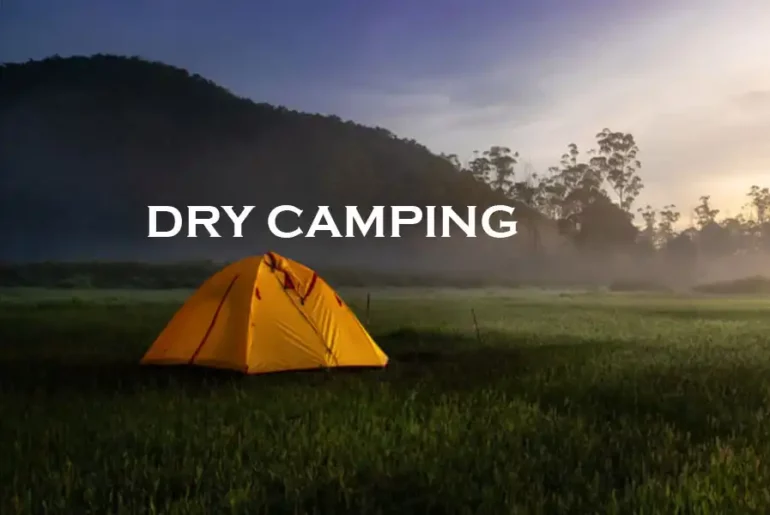For countless adventurers, there’s simply no match for the sheer joy of immersing oneself in the great outdoors through the timeless art of camping. But in recent years, a particular style of camping has captured the hearts of outdoor enthusiasts—dry camping.
Often synonymous with terms such as ‘boondocking’ and ‘primitive camping,’ dry camping has swiftly gained popularity among those with a taste for adventure. And why wouldn’t it? When you dive into dry camping, you’re not just signing up for an overnight stay in nature, but rather, an immersive outdoor experience that will elevate your appreciation for the environment and test your resilience.
But dry camping is not just for the adrenaline junkies. For those yearning for peace and a respite from the hustle and bustle of urban living, dry camping promises a truly satisfying getaway. There’s a certain charm in disconnecting from modern conveniences and connecting with the elements instead.
So, if you’re intrigued by this combination of outdoor adventure, exploration, and resourcefulness, pack your excitement and curiosity as we venture into the captivating world of dry camping. Let’s leave the beaten path and make our own way into the wilderness. Are you ready? Let’s dive right in!
What Exactly is Dry Camping?
When you hear the phrase ‘dry camping,’ you might imagine an adventurous escape to a desert oasis, where water sources are scarce and the thrill of self-sufficiency awaits. But, in reality, it refers to a form of camping that’s much more about self-reliance than arid landscapes. Simply put, dry camping is about camping without hookups – no electricity, no water, and no sewage disposal facilities. It’s just you, your camping gear, and the great outdoors.
Often associated with ‘boondocking’ or ‘primitive camping,’ dry camping challenges us to unplug from our modern amenities and to rely on our wits and resources instead. Some may see this as a step back, but to many, it’s a refreshing way to truly disconnect from everyday distractions and reconnect with nature.
Unlike traditional camping where you might park your RV at a campsite with all the utilities, dry camping is more akin to taking your home off the grid and parking it in nature’s backyard. You’ll find dry campers set up in the heart of national forests, in the vast openness of BLM land, or even stealth camping in an urban area – always ready for the next adventure.
That said, the essence of dry camping isn’t just in the absence of modern facilities. It’s also about resourcefulness, planning, and sustainability. It’s an invitation to experience a captivating getaway, where you can break free from the ordinary and surrender to the wonders of nature. Lose yourself in the gentle melodies of the wind, marvel at the vast celestial canvas above, and savor the unspoiled magnificence that surrounds you.
But, just as every rose has its thorn, dry camping, too, comes with its unique challenges and rewards. So, let’s dive into how you can gear up for this thrilling escapade.
Essential Preparation Tips for Dry Camping
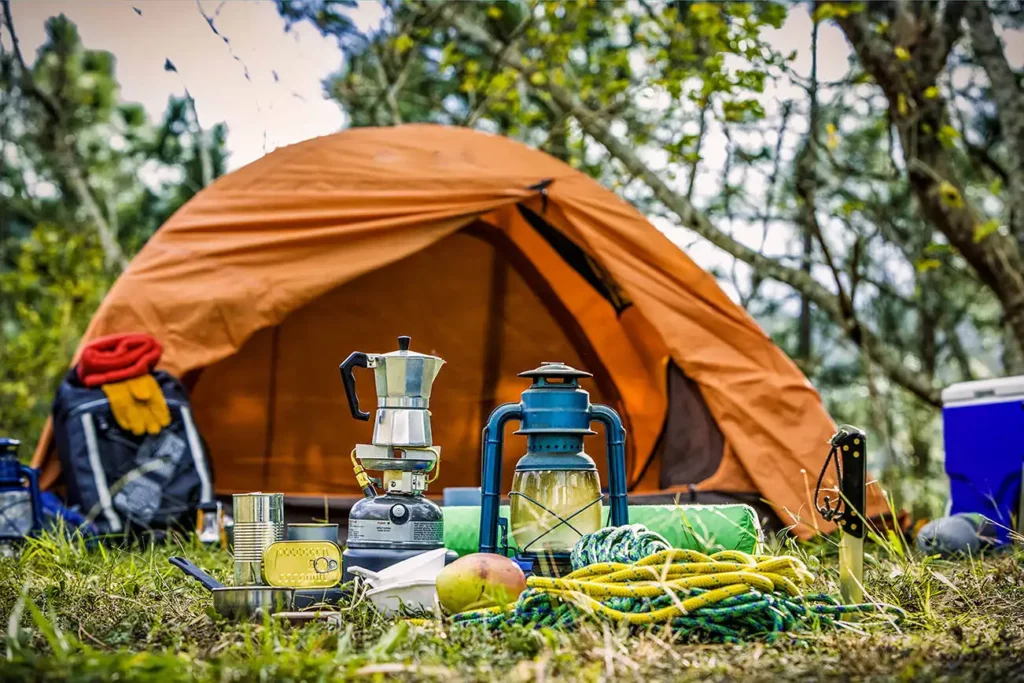
The key to a successful dry camping trip lies in careful preparation. Like any great adventure, the thrill of dry camping comes with a certain degree of unpredictability. Therefore, you’ll need to get your ducks in a row before setting out.
Checklist for Dry Camping
Having a thorough camping checklist is a great place to start. This should include all your essential gear and supplies. Let me give you a heads-up on the absolute camping must-haves for your journey:
- Shelter: This could be an RV, a camper van, a tent, or even a hammock, depending on your preference and the weather conditions.
- Sleeping Gear: Don’t forget your sleeping bag, pillow, and possibly a sleeping pad for added comfort.
- Food and Water: Pack enough to last for your entire trip, plus a little extra for emergencies. Remember, when dry camping, every drop of water counts, so plan your meals accordingly.
- Cooking Gear: Include a portable stove, fuel, and cooking utensils.
- Lighting: Headlamps, lanterns, and flashlights are all vital. Don’t forget the extra batteries!
- Clothing: Prepare for all weather conditions. It’s always a good idea to layer up.
- First Aid Kit: Accidents can happen, so come prepared.
- Map and Compass: Even if you’re planning on using GPS, having these as a backup is a wise move.
- Trash Bags: Remember, the cardinal rule of dry camping is “pack it in, pack it out.”
Selecting a Perfect Campsite
Choosing the perfect spot for dry camping is like embarking on an exhilarating adventure, filled with excitement and a few hurdles along the way. You should consider safety, access to resources, and legality before making a decision. Allow me to share some useful tips:
- Know the Rules: Dry camping is allowed on most BLM (Bureau of Land Management) and USFS (United States Forest Service) lands, but always check the specific rules of the area you’re planning to camp in.
- Access to Water: If possible, try to set up camp near a water source. Just remember to always purify water before drinking or cooking with it.
- Safety First: Look out for potential hazards like dead trees, high winds, and signs of wildlife.
- Privacy vs. Proximity: While solitude can be a perk of dry camping, being completely isolated, especially if you’re new to it, might not be ideal.
There’s more to dry camping than just packing and picking a spot, though. It’s also about knowing how to navigate your environment and deal with any situation that arises. Let’s explore some survival skills that can come in handy when dry camping.
Dry Camping Survival Skills You Need to Know
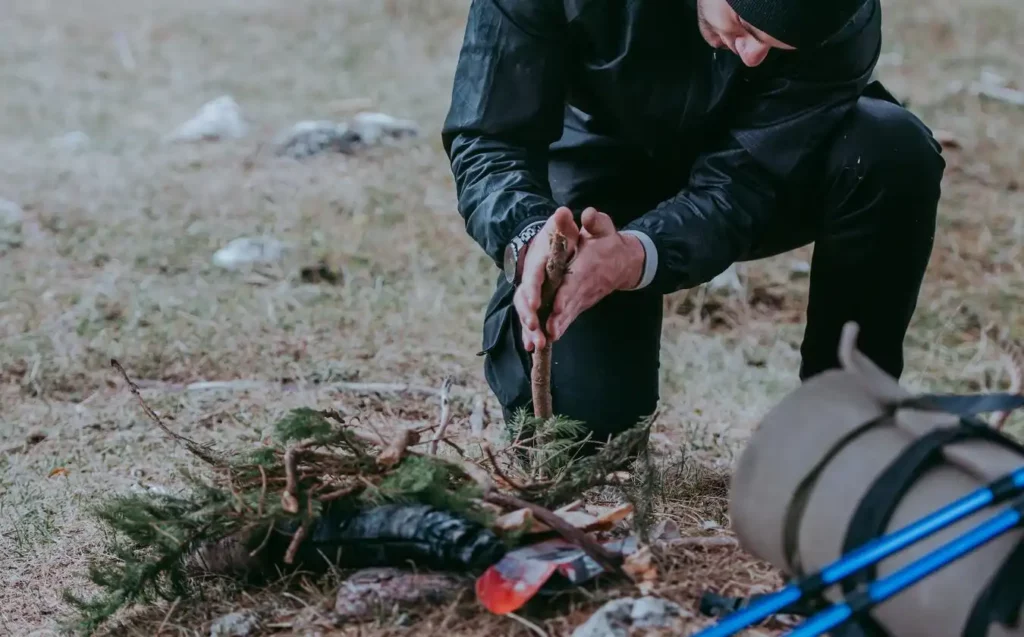
In dry camping, every day is an adventure, and survival skills are your treasure map. Knowing how to navigate your environment and use available resources can make the difference between a nightmare and a trip you’ll remember fondly.
Finding and Purifying Water
Keeping yourself properly hydrated is absolutely essential, especially when you’re out exploring the great unknown. And let me tell you, being able to locate and purify water can truly be a game-changer, even a lifesaver, in these adventurous situations. If you’re near a body of water, consider yourself fortunate. But do keep in mind that the water flowing through rivers, lakes, and streams requires a touch of purification before quenching your thirst. Boiling is the most reliable method, but water filters or purification tablets are excellent choices when fuel is scarce.
Creating Fire
Fire is your versatile friend in the wilderness – it provides heat, wards off wildlife, and cooks your food. Carry waterproof matches or a lighter, but also familiarize yourself with friction-based methods like the bow-drill or hand-drill techniques. Fire starters like cotton balls soaked in petroleum jelly or commercial fire starters can also come in handy.
Navigation
While GPS devices are fantastic companions on our journeys, they too can occasionally fail, lose their signal, or simply run out of battery. That’s when traditional navigation skills come into play. Familiarize yourself with reading topographic maps and using a compass. Additionally, understanding natural navigation cues such as the movement of the sun and stars can be invaluable.
Basic First Aid Tips
Accidents can happen, and knowing basic first aid is essential. Understand how to treat common injuries like cuts, sprains, or burns. Learn the signs of heat exhaustion, dehydration, and hypothermia, and unlock the secrets to tackling these challenges head-on. Always carry a well-stocked first aid kit with you and remember to replace used or expired items regularly.
Exploring the untamed wilderness is an exhilarating adventure, but what entices individuals to abandon the comfort zones of conventional campsites and embark on a journey into the great unknown? It’s time to explore the benefits of dry camping.
Discover the Benefits of Dry Camping
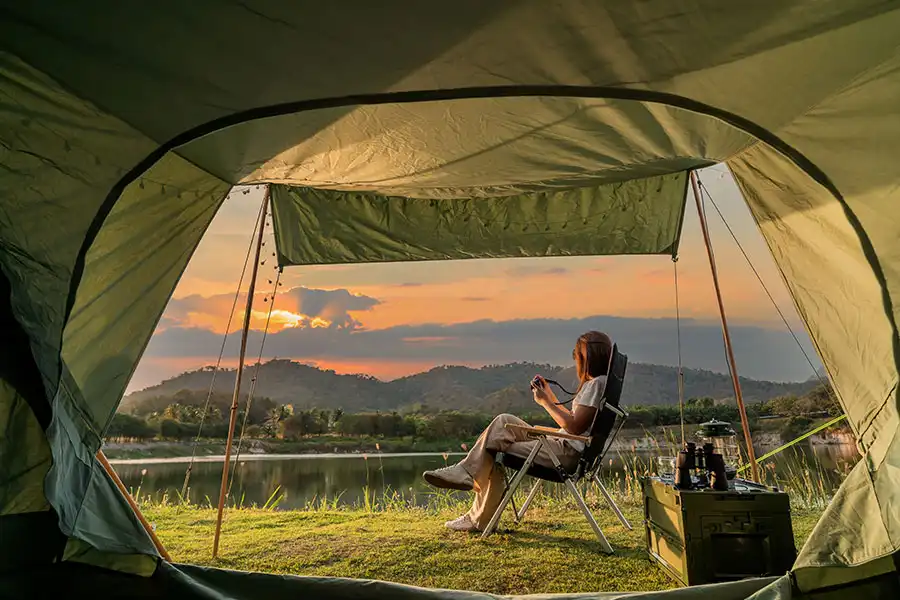
You might wonder why some folks are willing to forgo amenities for the sake of dry camping. The beauty of this experience lies in the multitude of rewards it offers, making it truly worth every ounce of effort.
Connection with Nature
Nothing beats the serenity of waking up to the orchestra of chirping birds or watching the sunset paint the sky with hues you can’t find in any cityscape. Embarking on a dry camping adventure allows you to fully embrace the enchanting embrace of Mother Nature, far removed from the chaotic commotion of everyday existence. It’s an intimate communion with the great outdoors, helping you reconnect with the primal rhythms of the earth and yourself.
Practice Survival Skills
As we’ve just discussed, dry camping is an incredible chance to unleash your inner adventurer and put your survival skills to the ultimate test. Mastering the art of starting a fire or purifying water is one thing, but oh, the thrill of putting those skills to the test amidst the untamed wilderness is a whole different story.
Learning to Live Minimally
Dry camping teaches the art of minimalist living. With limited space and resources, you learn to prioritize needs over wants. This newfound perspective can trickle down to everyday life, fostering an appreciation for the simple things and leading to a more mindful, sustainable lifestyle.
But let’s not sugarcoat it – dry camping does come with challenges. Let’s face the wild winds head-on and delve into what those are and how you can navigate them effectively.
Navigating the Challenges of Dry Camping
Dry camping may seem like a walk in the park with all its benefits, but it does require careful navigation through a maze of potential challenges. Let’s bring them to light, so we can chart our way around them.
Lack of Amenities
Dry camping presents a thrilling adventure, but it’s not without its challenges. One of the most notable hurdles is bidding farewell to the modern comforts we’ve become so fond of. No running water, no electricity, and no readily available food can be a tough adjustment. But remember, challenge breeds resilience. Prepping meals on a campfire, using solar-powered gear, and adapting to the rhythms of nature can be rewarding although it initially seemed challenging.
Potential for Danger
Nature is unpredictable, which can lead to potential hazards. From weather changes to encounters with wildlife, dry camping puts you right in the middle of it all. That’s why it’s absolutely essential to have those survival skills in your back pocket and stay in the know about the region where you’ll be setting up camp.
Isolation
In the depths of nature, far from the noise and lights of civilization, you might feel a certain degree of isolation. This solitude can be a double-edged sword that can both bless and curse our wandering souls. Embarking on this journey offers a precious opportunity for self-reflection and peaceful moments, yet it may stir up a sense of unease in certain individuals.
But fear not; with a well-packed bag of tips and tricks, these challenges can turn into rewarding experiences.
Pro Tips to Enhance Your Dry Camping Experience
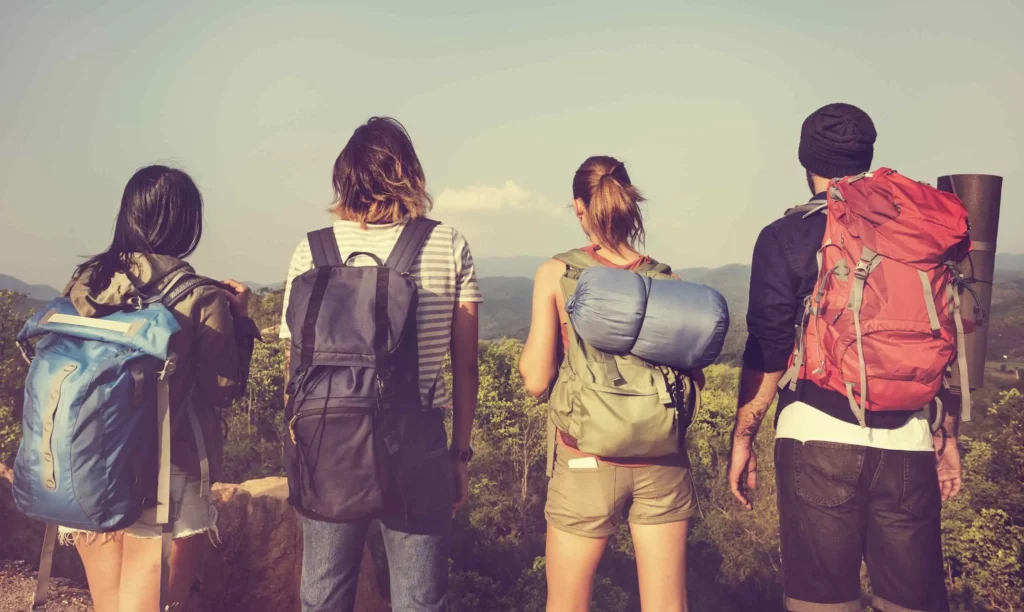
The beauty of dry camping lies in its simplicity. Yet, just like a seasoned chef has their favorite tricks to take a dish to another level, seasoned dry campers also have their favorite tips to enhance the experience. Let’s delve into these nuggets of wisdom.
Prepare for the Unexpected
Embracing the thrilling unpredictability of Mother Nature is undeniably part of the allure, but it’s wise to equip yourself with the essentials. Make sure you have a plan B for anything that could go wrong—from weather changes to gear malfunctions. Always carry a compact survival kit with essential items like a compass, first aid supplies, a multi-tool, and fire starters.
Embrace Minimalism
Keep in mind, you’re not moving out into the wild; you’re simply exploring. Travel smart and pack light, bringing only the essentials. Not only will this nifty backpack make your travels a breeze, but it’s also a planet-friendly choice that lightens your impact on Mother Earth.
Optimize Your Campsite Selection
When it comes to picking the perfect campsite, you’ve got to be a savvy explorer. Consider all the important factors: how close you are to refreshing water sources, the level of the ground beneath your feet, how much wind you’ll be exposed to, and any potential hazards lurking nearby. Remember, an ideal campsite is not just about the view, but also about safety and practicality.
Know Your Limits
Dry camping can be physically and mentally challenging. Know your limitations and don’t overdo it. Taking care of your well-being is absolutely crucial! Remember to recharge those batteries, quench your thirst, and fuel your body with scrumptious, nutritious food.
Conclusion: Wrapping Up Your Dry Camping Journey
So, there you have it – your ultimate handbook to immersing yourself in the thrilling realm of dry camping. From understanding its essence to equipping yourself with the best survival skills and pro tips, you are now ready to take on the great outdoors in the most raw and authentic way possible. Dry camping isn’t just about getting away from the hustle and bustle of city life; it’s a one-of-a-kind adventure that transports you to your primitive roots, rekindles your bond with the great outdoors, and imparts priceless wisdom for life.
Sure, it might seem daunting initially, especially when you’re trading the comfort of your home for a tent in the wilderness. But with proper preparation and a hearty dose of adventurous spirit, dry camping can open doors to experiences you’ve never imagined. Remember, as with any adventure, it’s not about the destination; it’s about the journey.
Well, our journey into the realm of dry camping has come to an end, but yours is just about to begin. It’s time to pack your bags, put on your hiking boots, and step into the captivating wilderness that awaits. And remember, no matter how rugged the path, with the right preparation and mindset, you can navigate your way through it like a pro.
FAQs
Why dry camping?
So, you’re asking why you should consider dry camping? Well, think about this: A star-lit sky with no city lights to obscure the view. A perfect solitude only interrupted by the sounds of wildlife. The unmatched challenge of being self-reliant in the wild. If this doesn’t tickle your adventurous bone, I don’t know what will!
Why is it called dry camping?
Dry camping gets its name because it’s, well, dry! And no, I don’t mean a dry sense of humor. The term signifies the lack of amenities like running water, electricity, or hookups. It’s all about you, the wilderness, and your spirit of adventure. Dry camping is essentially about roughing it out, tapping into your primal instincts. So, let’s go dry!
How do you dry camp?
Ah, the art of dry camping! It starts with the right preparation – having a detailed plan, the necessary gear, and a keen sense of adventure. Think of it as packing a small, self-contained world on your back or in your vehicle. You set up camp in an unmarked spot, away from modern conveniences. It’s all about survival, independence, and getting close to nature. Remember, every rock you turn over is a potential life lesson!
How do you conserve water when dry camping?
Conserving water while dry camping is an art form, my friend. It’s like the great game of Tetris, but instead of blocks, you’re maneuvering with water usage. Pre-washing and wiping dishes before washing, using a spray bottle for rinsing, and reusing grey water are just some of the ways to get creative. And let’s not forget the golden rule: never let the tap run free. In the world of dry camping, every drop counts!
How much water do you need for dry camping?
The answer varies based on factors such as duration, weather, physical activity, and personal needs. However, a good rule of thumb is to carry about one gallon of water per person per day for drinking and cooking. Remember, hydration is the name of the game when dry camping. But don’t fret, if you run out, we can always resort to rain dances!
Is dry camping safe?
Absolutely! But like all great adventures, safety hinges on preparation. You need to be ready for potential challenges such as wildlife encounters, weather changes, and maintaining hygiene. It’s like being in an episode of Survivor, but without the camera crew. A well-equipped first aid kit and good knowledge of the local flora and fauna go a long way in ensuring safety. But remember, safety first, Instagram pictures later!
What are the legal aspects of dry camping?
It’s generally legal to dry camp in national forests and Bureau of Land Management areas, but local regulations can vary. So do your homework, folks! It’s essential to check with local authorities or on their websites before you set off. And remember, “Leave No Trace” isn’t just good advice; it’s often the law!
What is the best gear for dry camping?
The best gear for dry camping is like the Avengers – each item serves a unique purpose, and when combined, they can help you tackle any situation. A durable tent or camper, reliable sleeping gear, cooking equipment, a sturdy backpack, water storage, navigation tools, and a first-aid kit are must-haves. But remember, the best gear is only as good as the camper using it. So, equip yourself not only with gear but also with knowledge and skills!
